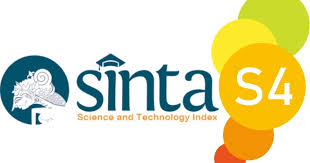PENERAPAN REWARD AND PUNISHMENT SEBAGAI UPAYA MENINGKATKAN DISIPLIN KEHADIRAN GURU MENGAJAR DI KELAS PADA SD NEGERI 08 KOTO BARU
Abstract
The example of teachers can be seen from the daily behavior of teachers both inside and outside the school. In addition to the example of teachers, teacher discipline is also one of the important things that must be possessed by teachers as a teacher and educator. The fact in the field that we often encounter in schools is the lack of teacher discipline, especially the problem of teacher discipline entering the classroom during learning activities in the classroom. The approach used in this action research is a qualitative approach. This means that this research was carried out because it was found that the problem of the low level of teacher discipline in class attendance in the process of teaching and learning activities was found. This problem is followed up by applying a coaching model to teachers in the form of the application of Reward and Punishment carried out by the principal, these activities are observed and then analyzed and reflected. The revised results are then reapplied in subsequent cycles Based on data analysis, from this study, it can be concluded that the application of Reward and Punishment is effective for improving teacher performance in the presence of teachers in the classroom in teaching and learning activities. The data obtained showed that after the implementation of actions in the form of Reward and Punishment, teachers who were more than 15 minutes late were 0, and teachers who were less than 10 minutes late were 6 teachers. The application of Reward and Punishment can increase the discipline of teachers present in the classroom at teaching and learning activities at SD Negeri 08 Koto Baru
Downloads
References
Amstrong. Michael, (1991). Manajemen Sumber Daya Manusia. Jakrta:Ghalia Indonesia
Anwar Prabu Mangkunegara. (1994). Psikologi Perusahaan. Bandung:PT. Trigenda Karya __________________________ (2000). Manajemen Sumber Daya Manusia Perusahaan. Bandung : Penerbit Remaja Rosdakarya.
Arikunto, S. (2002). Prosedur Penelitian Suatu Pendekatan Praktek. Jakarta:Rineka Cipta
Aunurrahman. (2009). Belajar dan Pembelajaran. Bandung:Alfabeta
Bambang Nugroho. (2006). Reward dan Punishment. Bulletin CiptaKarya Departemen Pekerjaan Umum Edisi No. 6/IV/Juni 2006
Departemen Pendidikan Nasional. (2003). Undang-undang Nomor 20 Tahun 2003 Tentang Sistem Pendidikan Nasional. Jakarta:Depdiknas
Hidayat, Sucherli. (1986). Peningkatan Produktivitas Organisasi dan Pegawai Negeri Sipil: Kasus Indonesia, Jakarta:Prisma
Megawangi, Ratna. (2007). Membangun SDM Indonesia Melalui Pendidikan Holistik Berbasis Karakter. Jakarta:Indonesian Heritage Foundation
Sanjaya, W. (2008). Kurikulum dan Pembelajaran. Teori dan Praktik Pengembangan Kurikulum Tingkat Satuan Pendidikan (KTSP). Jakarta:Kencana Prenada Media Group
Subagio. (2010) Kompetensi Guru dalam Meningkatkan Mutu Pembelajaran [On Line]. Tersedia : http://subagio-subagio.blogspot.com/2010/03/kompetensi-guru-dalammeningkatkanmutu.html
Syamsul Hadi, (2009). Kepemimpinan Pembelajaran, Makalah Disampaikan pada Sosialisasi Akuntabilitas Kinerja Kepala Sekolah Dalam Inovasi Pembelajaran. Departemen Pendidikan Nasional, Direktorat Jenderal Peningkatan Mutu Pendidik dan Tenaga Kependidikan, Direktorat Tenaga Kependidikan
Andikos, F., & Gusteri, Y. (2016). Komunikasi Manusia Dengan Komputer. Bogor: In Media.
Copyright (c) 2022 Suratri, S.Pd

This work is licensed under a Creative Commons Attribution 4.0 International License.













